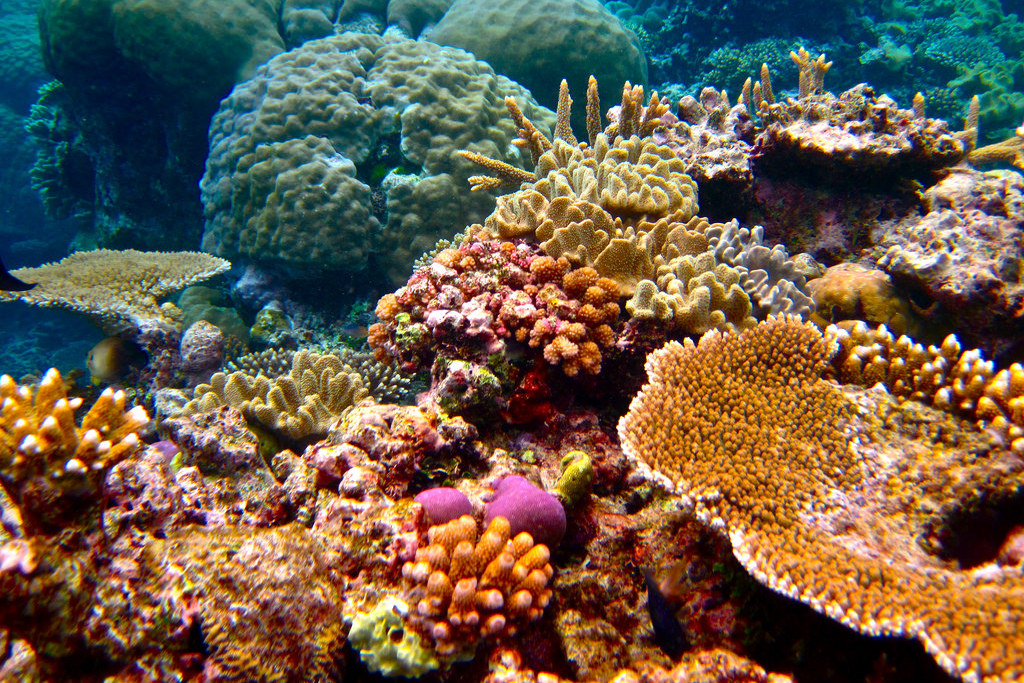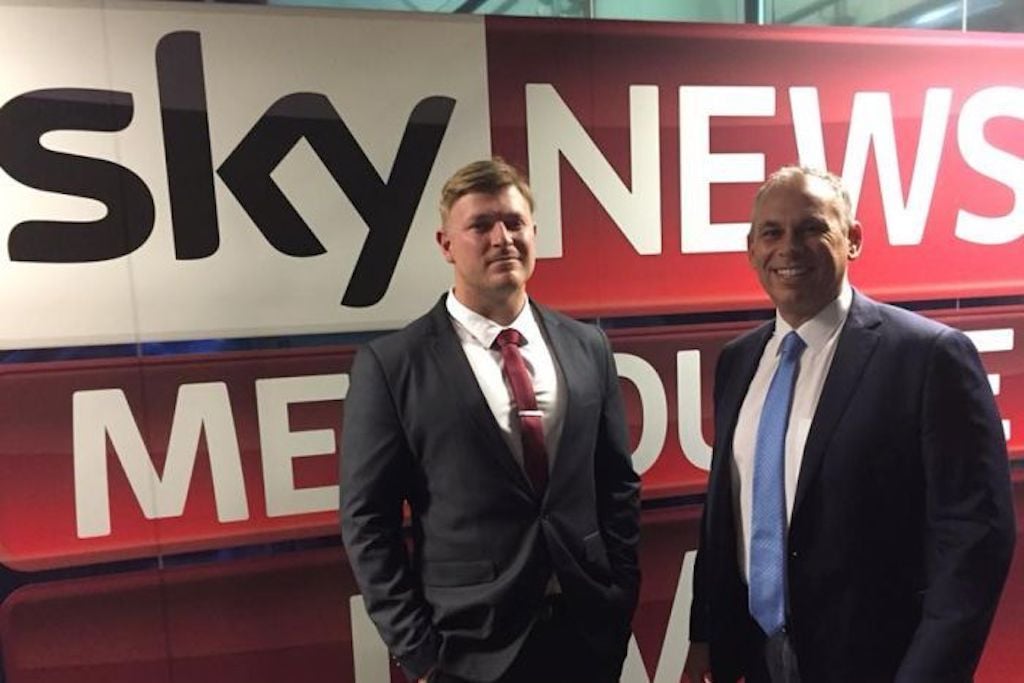Junk Explained: Here’s Why People Think A $444M Government Grant Seems A Little… Fishy
$444 million for the reef sounds good, but there are a whole lot of questions.

On April 9, three men sat down in Sydney for a meeting. It was unusual for a few reasons. First of all, because of who was there: Prime Minister Malcolm Turnbull set aside time for the small meeting, which was also attended by environment and energy minister Josh Frydenberg, and the Great Barrier Reef Foundation chair John Schubert.
It was also unusual because of who wasn’t there. No public servants were present at the meeting. (A senate inquiry had heard that Environment and Energy Department secretary Finn Pratt attended the meeting, but was later told that that evidence was a mistake).
The most out of place element of the meeting was what it lead to. The Great Barrier Reef Foundation isn’t a large organisation. Its revenue in 2016 was $8 million. It has six full-time and five part-time employees. It was a small player in a reef conservation game that’s dominated by huge, well-resourced government bodies.
But less than a month after the meeting had taken place, Frydenberg announced that the foundation was to be given a $443.8 million grant as part of the government’s plan to save the Great Barrier Reef from environmental damage.
What Is The Great Barrier Reef Foundation?
While it’s small, the GBRF is stacked with well-known corporate names. Its board includes:
- Chairman John Schubert is a former Commonwealth Bank chairman and former director of BHP Billiton and Qantas.
- Grant King is the current Business Council of Australia president and former Origin Energy chief executive.
- Michael Cameron, Suncorp’s chief executive.
- Maureen Dougherty, Boeing’s leader for the Australasian region.
- Steven Sarget, former present of GE Mining.
Check out their chairman’s panel — a separate advisory board — on their website. It’s similarly full of big business names.
The foundation says it represents a chunk of corporate Australia that desperately wants to see the reef repaired. So far, it has used innovative techniques to try and clean it up. One of its projects used an underwater robot that could efficiently kill the pesky crown-of-thorns starfish. Another project attempts to shift a huge turtle nesting area to safer areas.
“We have a track record of delivering — albeit on a smaller scale — very smart, wise projects which are already making a difference to the reef,” chairman Schubert told the AFR. “And we have a unique capability with our members and our contributors to do almost anything. They’ve been there, done that.”
The not-for-profit organisation is officially advised by scientific bodies, including the CSIRO and the Australian Institute of Marine Science. Its projects frequently require it to work with universities. The foundation supports a move away from fossil fuels.
What Are Critics Of The Grant Saying?
For big grants like this one, the government usually goes through a tender process. In a tender process, charities and government organisations can put together a bid to try and win the grant.
There was no tender process for this grant.
As opposition leader Bill Shorten puts it: “Most Australians would be shocked to learn this prime minister personally just walks into a meeting and hands over nearly half a billion dollars of taxpayers’ money without a moment’s thought.”
The @GBRFoundation says it’s raised $90m since it began in 2000. Labor analysed every year of its annual reports since 2000 and could only find $65m in revenue. #reefgate
Thread 👇
— Kristina Keneally (@KKeneally) August 5, 2018
The main claim from Labor and The Greens is that the government didn’t go through proper due diligence with the big grant — $440 million is a lot of money, after all.
On Insiders on Sunday, senior Labor MP Tony Burke wondered whether the grant money would personally benefit wealthy corporate players.
He said that a lot of those banking and mining executives from above might use the money to try and fundraise for their foundation. And while a government agency would be forced to be transparent about where they’re spending their money, there’s no requirement for the Great Barrier Reef Foundation to ever reveal how they fundraise.
Under the grant agreement, the foundation will be able to spend $40 million on administration — this includes fundraising activities.
“There are holes in this agreement,” Burke said. “It is completely lawful for the Foundation to wine and dine the mining and banking executives that are on their chairman’s panel in the name of trying to win them over for more fundraising.”
Critics have also questioned why the grant wasn’t offered to existing government agencies that are already trying to fix up the Great Barrier Reef. The Liberal government set up its own Reef Trust, and also have the reef monitoring government body AIMS at their disposal. The CSIRO could have also been recipients of the grant.
New senator (and former NSW premier) Kristina Keneally has been a particularly vocal critic. She even got into a fight with Channel Nine’s Karl Stefanovic over the grant, after he threw his support behind it. Keneally claims Stefanovic had a conflict of interest with the Great Barrier Reef Foundation.
Hey @GBRFoundation – how much of that $444m of public money currently sitting in your bank accounts are you going to spend sponsoring @karlstefanovic & The Today Show? Or any other network television shows? #reefgate pic.twitter.com/hISpbB6Eeo
— Kristina Keneally (@KKeneally) August 4, 2018
She laid out a detailed case for the conflict of interest in a thread of tweets over the weekend.
A lot of critics have also suggested that the grant wasn’t even worthwhile in the first place, and that the money would have been better spent on halting mines and raising emissions reduction targets.
“Support for more dirty coal, like backing the Adani mega-mine and pushing low-ball pollution reduction targets under national energy policy, is inconsistent with a healthy Great Barrier Reef,” Australian Conservation Foundation chief Kelly O’Shanassy told the AFR.
How Is The Government Defending The Grant?
On Friday, Turnbull defended his decision to give the $443 million grant to the Great Barrier Reef Foundation.
“[The Foundation] is an outstanding organisation, this has been done completely transparently,” he said. “There is nearly a 100-page agreement between the government and the foundation as to how the money will be invested and spent, and it will all be subject to oversight both by government and the Australian national audit office.”
He continued: “This is a wonderful investment in ensuring that we maintain the health of the Great Barrier Reef.”
Managing director of the Great Barrier Reef Foundation, Anna Marsden, said that the not-for-profit would be able to change to accommodate for the grant.
“Of course we’ve got to do some scaling up,” Marsden told ABC Radio National. “The money that’s been entrusted to us through this grant is asking us to do what we’ve done for 18 years, which is fundraise for the reef and design projects and partnerships.”
When asked what she thought the biggest threat to the reef was, Marsden said it was climate change.
And why was a charity with clear links to climate change-denying mining companies best placed to solve that problem?
“We’ve got to take every Australian and every company with us along this journey,” Marsden argued. “We aren’t going to be able to save the Great Barrier Reef if we don’t have everybody working together.”

